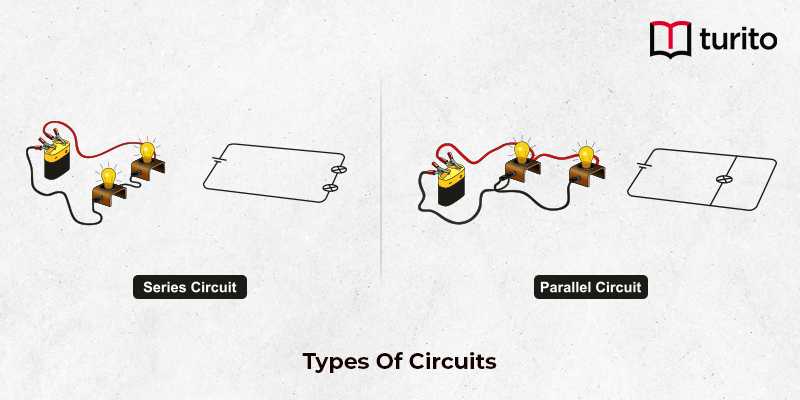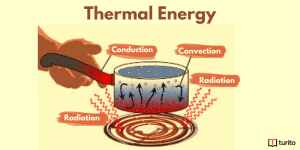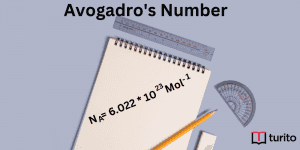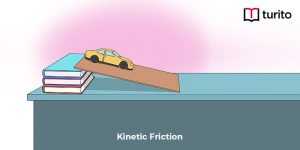Electricity has a critical place in modern society. It has become a convenient resource in everyone’s life. What is electricity, then? It’s simply the flow of current or electrons. Now the question is, what makes the current flow? The answer is the potential difference among the terminals of the circuit.
Then again, what is the circuit? How many types of circuits are commonly used? Is there a way to stop the working of an electric circuit? What is a circuit breaker?
These are some questions you probably tried to search for after knowing the word ‘circuit.’ Therefore, this article is designed especially for you. Let’s dive into it to know more about the types of circuits.
What Is an Electric Circuit?
An electric circuit is a closed loop of heat material that allows or provides a pathway for electrons to flow continuously without beginning or ending. It comprises electronic components such as resistors, switches, transistors, bulbs, capacitors, electric cells, diodes, and inductors connected by conductive wires.
A battery or power source is connected to the circuit, allowing an electron flow. Other energy sources can be photocells, thermocouples, or electric generators.
What Are the Different Types of Circuits?
There are different types of electric circuits based on the connections. The list of several circuit types that we usually see in electric circuits is as follows.
1. Based on key on or off:
-
Open Circuit:
An open circuit means a cut in the continuous path of electric flow, i.e., an unconnected circuit. It is a circuit with no closed loop for the current to flow through. An open circuit means that the circuit is not complete. Hence, the current will not flow. However, all the voltage will drop there in the open circuit terminal.
These types of circuits are used to keep charge in one place, i.e., not to let it flow away, like keeping a battery bank in the circuit but keeping it unconnected to the main circuit.
-
Closed Circuit:
Simply put, a closed circuit connects the power source and the thing to be powered. A closed circuit is a circuit in which at least one path exists without disconnection between two successive circuit members. Because of the closed circuit, an electric current passes through the active energy source toward the other components in the circuit.
A circuit can be closed to glow a light bulb or other load. This types of circuits lets electric appliances work with the flow of electricity.
2. Based on the Circuit Connection:
-
In-series Circuit:
A series circuit is a straightforward and easy-to-understand circuit. In a series circuit, electrons can pass between one or more resistors connecting in sequence. Anything that brings out power from a cell is cited as a resistor or a battery. The resistor or potential divider in a series circuit is generally a bulb. The circuit is connected to the cell from one terminal to the other, with no arms, to light up the bulb.
All circuit elements are linked from one terminal to the cell and the other to the bulb. If there are any gaps or disconnections in the connection of the circuit, it will cause the circuit to fail.
-
Parallel Circuit:
The components in parallel circuits each have their branch. As a result, the current in parallel circuits can take diverse pathways. Hence, the current in such circuits does not consistently follow the same path. Rather, the potential or voltage drop across individual branches is constant for all the branches linked in parallel. As the current is inversely proportional to the resistance of every branch, it separates itself throughout all the branches into inversely comparable amounts. Hence, the current is great when the resistance is at rock bottom and vice versa.
Properties of Series Circuit and Parallel Circuit
Series circuit:
In everyday life, series circuits are common. Some forms of Christmas or holiday lights are examples. A light switch is another common example. In addition, the idea of a series circuit is used in televisions, computers, submersible sump pumps, and other domestic electrical devices.
Important properties of a series circuit are
- The current flowing through each resistance is similar.
- The total of all individual resistances is equal to electrical resistance.
- The correspondent resistance is always greater than any single resistance in the circuit. For an equivalent resistance R and some individual resistances R1, R2, R3, …, Rn,
R > R1, R > R3, R > R2, …., R > Rn.
- The total isolated voltage dips across the resistances are equivalent to the supply voltage V. For a supply voltage V,
V = V1 + V2 + V3 + …. + Vn.
Parallel Circuit:
A foremost example is light attachments that utilize multiple light bulbs. When a solitary bulb in the installation goes, the light fixture pursues to operate. It is because, at each light holder, a parallel circuit permits the electricity to flow around the broken bulb. Parallel circuits permit us to route electricity through various parts in electronic conventions.
Important properties of a parallel circuit are
- The total of all individual conductance is equal to the equivalent conductance.
- The equivalent resistance is always smaller than the circuit’s resistances linked in parallel series. If R is the equivalent resistance,
R < R1, R < R3, R < R2, …., R < Rn
- The reciprocal of equivalent resistance is always equal to the sum of all reciprocal individual resistances in the circuit.
- The potential difference that flows through the circuit in parallel series is similar among all resistances in the circuit.
- The collective current (I) is the total sum of all the individual currents.
I = I1 + I2 + … + In
Series and Parallel Combi Circuit:
As suggested by the name, a series-parallel combo circuit combines circuits that operate in series and parallel.
What Is a Circuit Breaker?
A circuit breaker is a naturally operated electrical switch outlined to shield an electrical circuit from impairment caused by excess current, typically resulting from a short circuit or an overload. The fundamental function of a circuit breaker is to cut on the current flow after a fault is discovered.
Circuit breakers only perform the task of opening or closing the circuit. Still, they can open or close on their own because of relays during fault conditions.
They are made in different sizes, from small devices that guard low-current circuits or discrete household appliances up to massive power supplies designed to protect high-voltage circuits supplying an entire city.
What Are the Different Types of Circuits Breakers?
Generally, circuit breakers are classified under five classes. Different types of circuits breakers are as follows:
1. Air Circuit Breaker:
This circuit breaker is electronic equipment that safeguards electric circuits from short circuits or over current. It operates at atmospheric pressure in the air. Two types of air circuit breakers are
- Air blast type
- Plain type
2. SF6 Circuit Breaker:
SF6 (sulfur hexafluoride) gas is operated as the arc smother medium in this circuit breaker.
- Single interrupter SF6 circuit breaker claimed up to 220
- Four interrupter SF6 circuit breakers claimed up to 715V
- Two interrupter SF6 circuit breakers claimed up to 400
3. Vacuum Circuit Breaker:
Vacuum circuit breakers are evacuated chambers. These circuit breakers are placed between any high voltage electronic connections where made.
4. Oil Circuit Breaker:
This circuit breaker, i.e., OCB, is a circuit breaker that works on heat-proof oil as a dielectric medium to extinguish the bow and safely break the circuit.
- Bulk oil circuit breaker
- Minimum oil circuit breaker
5. Air Circuit Breaker:
An air circuit breaker is a circuit breaker to protect low voltage circuits, mainly for energizing and cutting off the high current.
A Switch and a Circuit Breaker
A switch is the most elementary types of circuits breaker. The fundamental function of a simple switch and a circuit breaker is the same, i.e., to connect the supply in a closed circuit and disconnect the supply in an open circuit.
The most critical difference between a switch and a circuit breaker(CB) is that a switch is a hand-operated device. Whereas a circuit breaker also operates manually, it can operate automatically under fault conditions.
Summary
An electric circuit is the service path for the flow of current or electrons. An electric wire creates a relation between a load source and voltage. A fuse and a switch are also operated between the load and source.
If you want to become a better engineer, having a fundamental understanding of the many types of electrical circuits is a crucial ability. We learned what an electric circuit is, the various sorts of electric circuits, and a straightforward diagram illustrating each types of circuits
Frequently Asked Questions
1. What makes electronic circuits reliable?
Electronic circuits are reliable because they consist
- Simplicity. The reduction of user connections and complexity
- Low mass (simplifies mechanical assembly, reduces stress during impact or shock)
- Well-understood failure mechanisms (and the ability to avoid them)
- Exhaustive pre-delivery testing (using facilities and techniques designed in)
- Good design practice (a clear product spec and well-defined sign-off and testing objectives)
2. What is a short circuit?
A short circuit is a type of fault where the electricity goes along a path where it’s not supposed to. These circuits have less resistance, and hence more current flow through them. If the high potential wire touches the opposite metal surface of an appliance, in that case, the whole gadget will bring out current and deliver the person touching it an electric shock.
3. What are the divergences between a series circuit and a parallel circuit?
- The difference between these two circuits are given below:
- Currently follows a single pathway in a series circuit. While in a parallel circuit, there are numerous pathways.
- In a series circuit, all components carry a similar current. In contrast, a similar potential difference runs across each component in parallel circuits.
- In a series circuit, the potential across all the components is equal to the emf of the battery or cell. In parallel series, the sum of the currents entering the point is the same as that of the current leaving the same point.

Relevant Articles
Understanding Thermal Energy: What It Is and How It Works
Thermal energy is essential to our daily lives, from warming …
Understanding Thermal Energy: What It Is and How It Works Read More »
Read More >>Avogadro’s Number: Meaning, Importance, and More
Introduction The concept of measuring the microscopic particles that make …
Avogadro’s Number: Meaning, Importance, and More Read More »
Read More >>Kinetic Friction – Definition, Laws, Types
Kinetic Friction Kinetic force is a force acting between two …
Kinetic Friction – Definition, Laws, Types Read More »
Read More >>



















Comments: